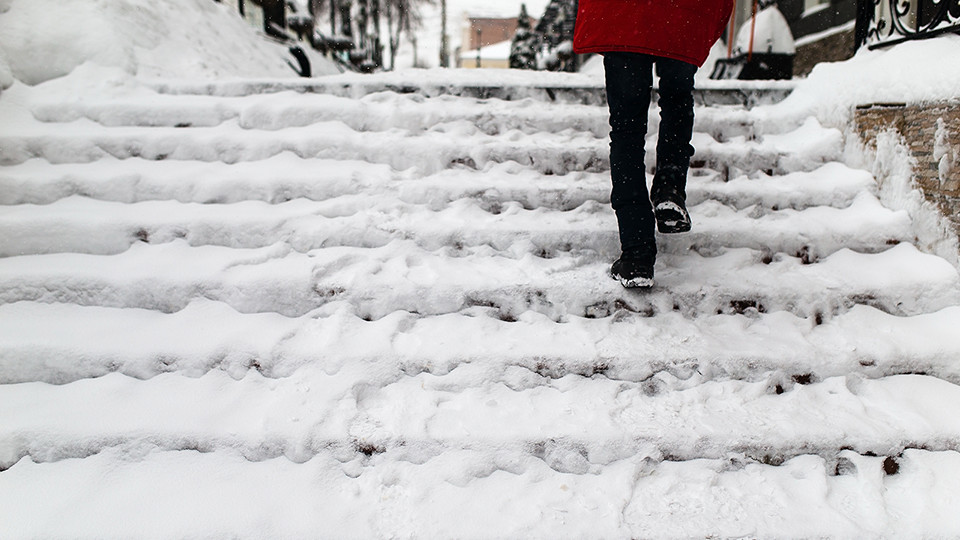Tenants Pay For Quality Snow RemovalExperienced Snow Removal Injury Lawyer
Tenants of office buildings and tenants of apartment complexes observe the snow and ice removal procedures instituted by the landlord. After observing the landlord implement procedures tenants develop an understanding as to when it is safe to walk to or from the building. The landlord almost always will blame the tenant for falling on ice due to a landlord failing to follow their snow removal procedures. The argument is the tenant knew or should have known that the sidewalk, parking lot or road was covered in a layer of clear ice.
The following are examples of lawyer George Patterson’s clients that believed it was safe to walk on what appeared to be wet pavement before they fell and suffered serious injuries:
A nurse arrives to work at a medical office building that treats oncology patients, orthopedic patients and the elderly. The nurse knew that medical tenants require the highest level of snow removal and ice prevention treatments. She rightfully believed that the pavement that appeared wet must have been treated with salt before she fell. The landlord usually followed strict snow removal procedures.
A Tenant that spent one and half days in her apartment after a severe snowstorm to give the landlord sufficient time to complete their snow removal procedures. She heard the contractors using snow blowers and left her apartment. She knew from prior years that the landlord would clear the snow and salt the walkways. She saw what appeared to be wet pavement before she fell.
A tenant that went to his car about 18 hours after a small snow storm stepped on what appeared to be wet pavement and fell. He believed that the landlord had cleared the snow and treated the paved areas as they had always in the past.
In Maryland if you have a reasonable belief that it was safe to walk on wet pavement then you arguably did not assume the risk of stepping on ice and falling.


